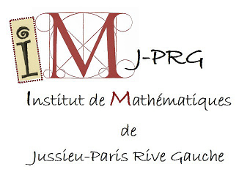| Résume | In this talk, we emphasize how the understanding of the properties of some dynamical systems can lead to the understandings of some (a priori unrelated) geometric problems.
To be more specific, we shall give some new insights of the geometry of germs of real analytic surfaces in (C^2,0) having an isolated Cauchy-Riemann (CR) singularity at the origin. These are perturbations of Bishop quadrics. There are two kinds of CR singularities stable under perturbations: elliptic and hyperbolic. Elliptic case was studied by Moser-Webster in their seminal '83 article, where they showed that such a surface is locally, near the CR singularity, holomorphically equivalent to normal form from which lots of geometric/analytic features can be read off.Here, we focus on perturbations of hyperbolic quadrics. As was shown by Moser-Webster, such a surface can be transformed to a formal normal form by a formal change of coordinates that may not be holomorphic in any neighborhood of the origin. Given a non-degenerate real analytic surface M in (C^2,0) having a hyperbolic CR singularity at the origin, we prove the existence of Whitney smooth family of holomorphic curves intersecting M along holomorphic hyperbolas. This is the very first result concerning hyperbolic CR singularity not equivalent to quadrics. This is a consequence of a non-standard KAM-like theorem for pair of germs of holomorphic involutions $\{\tau_1,\tau_2\}$ at the origin, a common fixed point. We show that such a pair has large amount of invariant analytic sets biholomorphic to $\{z_1z_2=const\}$ (which is not the usual torus) in a neighborhood of the origin, and that they are conjugate to restrictions of linear maps on such invariant sets. This is a joint work with Z. Zhao. |

